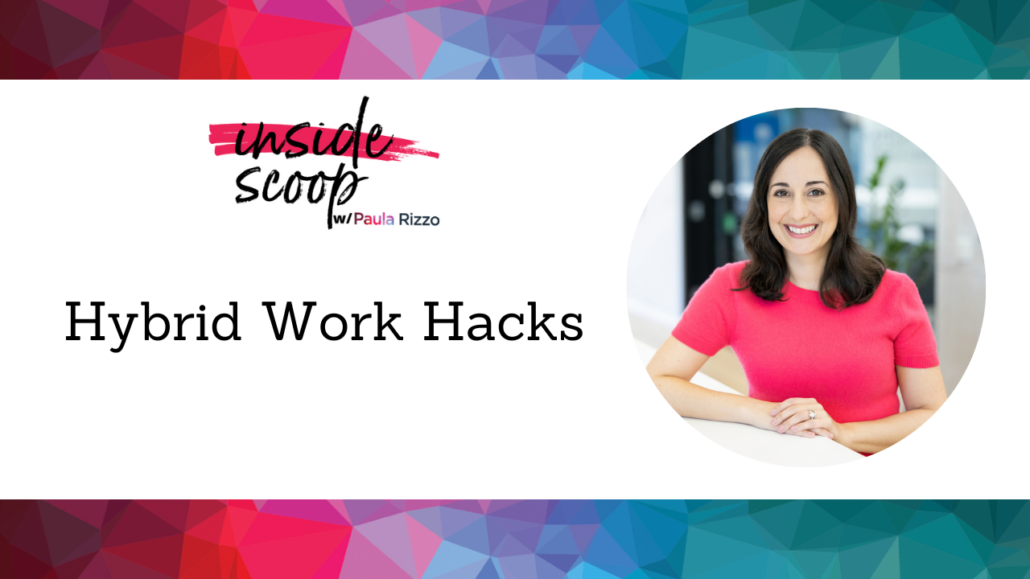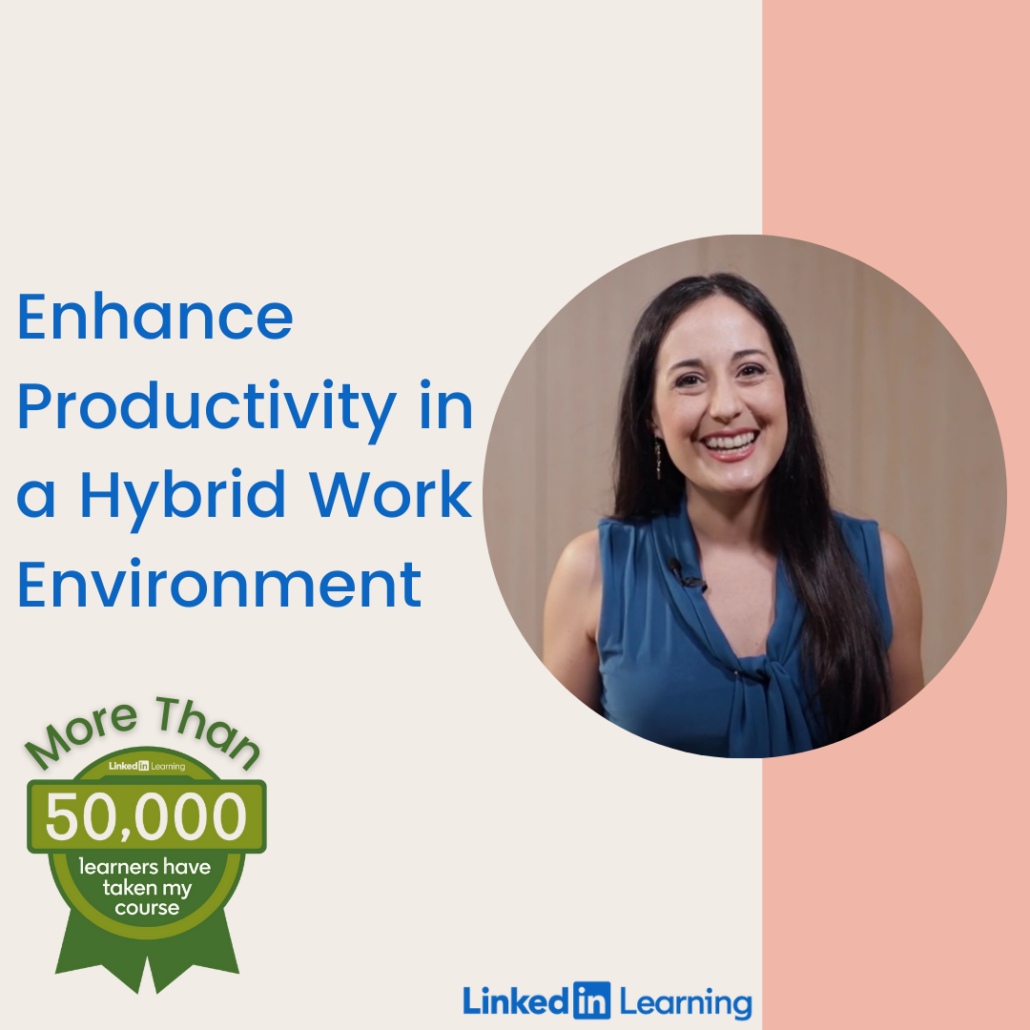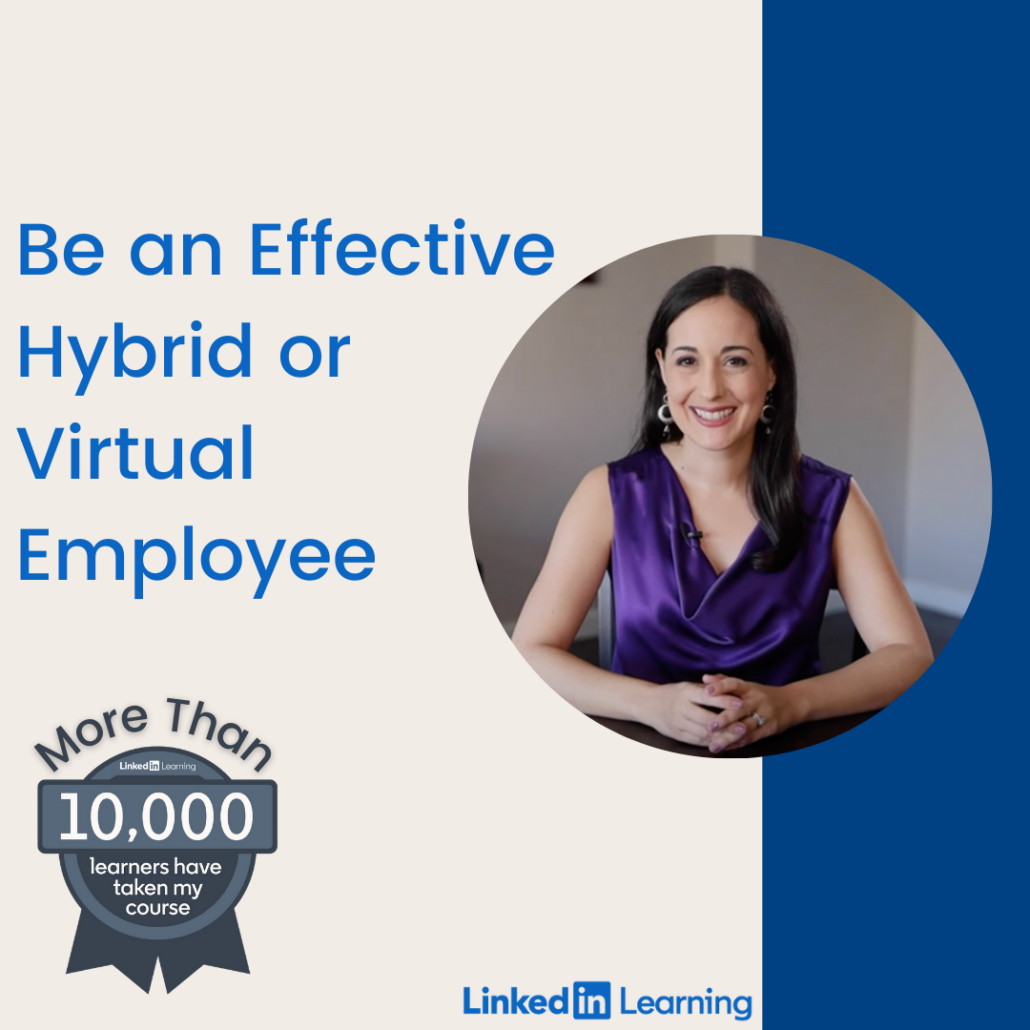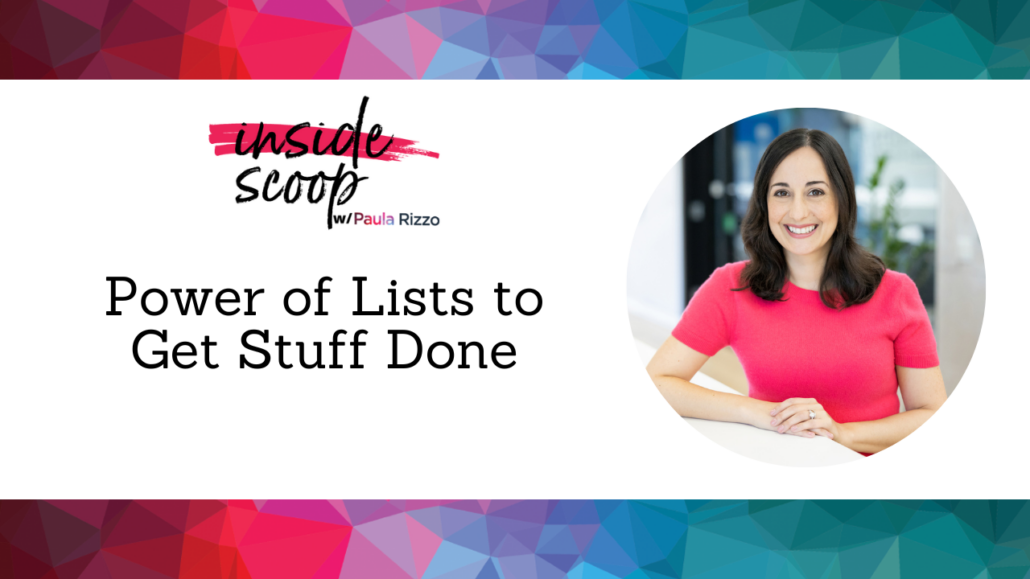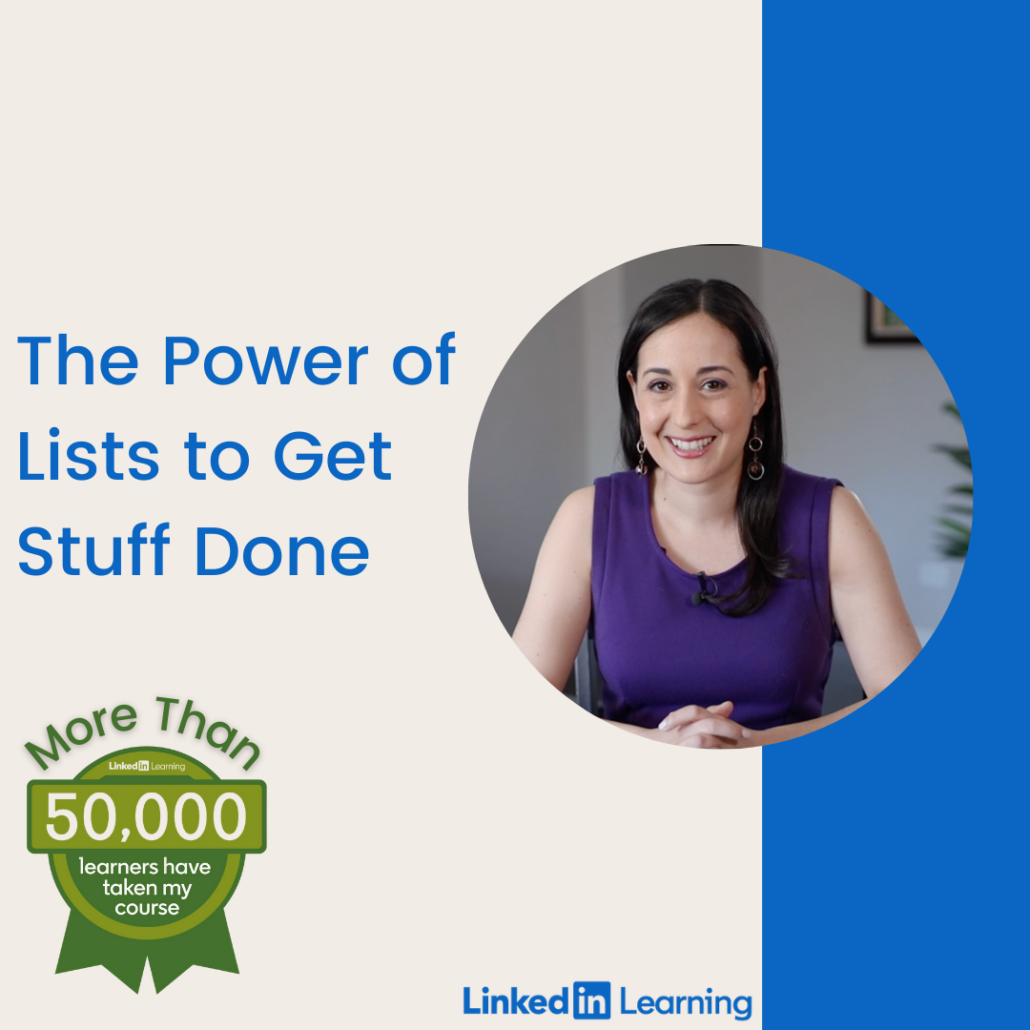___
BONUS FREEBIE: Want even more ways to stay organized, productive and less stressed? Click here to get access to my List-Making Starter Kit. It will boost your efficiency and get you back to doing more of the things you love.
___
I’ve been working remotely for six years now, so when the pandemic began, I felt ready to work from home and stay productive. I know that wasn’t the case for everyone.
Making the shift from an office to full-time remote work isn’t easy. There’s so many factors that influence productivity, and figuring out how to stay on top of things in a new set-up isn’t easy. So back at the beginning of the pandemic, I created a LinkedIn Learning course on this topic for people who were just thrown into WFH. It’s called Organizing Your Remote Office for Maximum Productivity.
I also recorded an episode of my LinkedIn Live show, Inside Scoop, about how to evaluate your remote work setup and make changes to improve your productivity.
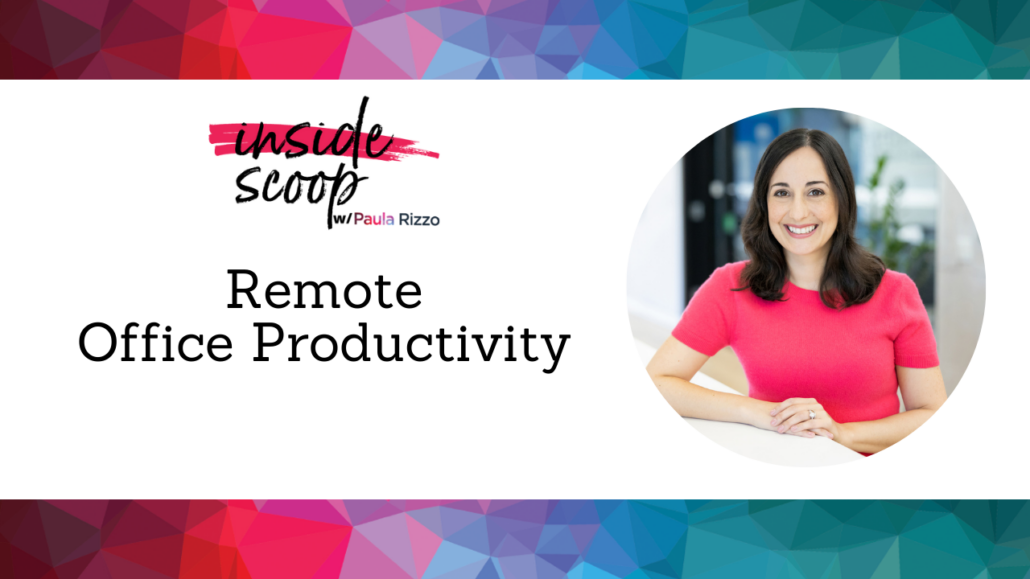
Now that working from home is a permanent reality for so many of us, I want to challenge you to take stock of how it’s going for you. Consider these questions:
Are you as productive as you want to be?
Does your workspace help or hinder your productivity?
Are your digital systems organized in a way that supports your productivity?
Reflecting on these questions can help you locate where you may need to reconsider your strategies for productivity. Below are five ways you can become more intentional about your remote work productivity.
1.) Identify your productivity style.
How do you work best? This is something I wrote all about in my book Listful Living. Here are some questions to get you started:
- What time of day do you do your best thinking?
- What in your office sparks joy?
- What is the view from your desk?
- What kind of lighting makes you feel your best?
Whether it’s having a view of some green space or lighting a candle, making small shifts to your workspace can have big effects on your productivity. Think about working in an office with harsh overhead lighting and no windows. That can really diminish productivity because it saps your energy. I want to help you build the opposite in your home office. The goal is an intentional space that is inviting and supportive.
I use these tips myself. In my new home office, I needed to really consider where I should arrange my furniture. It took a few tries to get my desk into a spot that felt right!
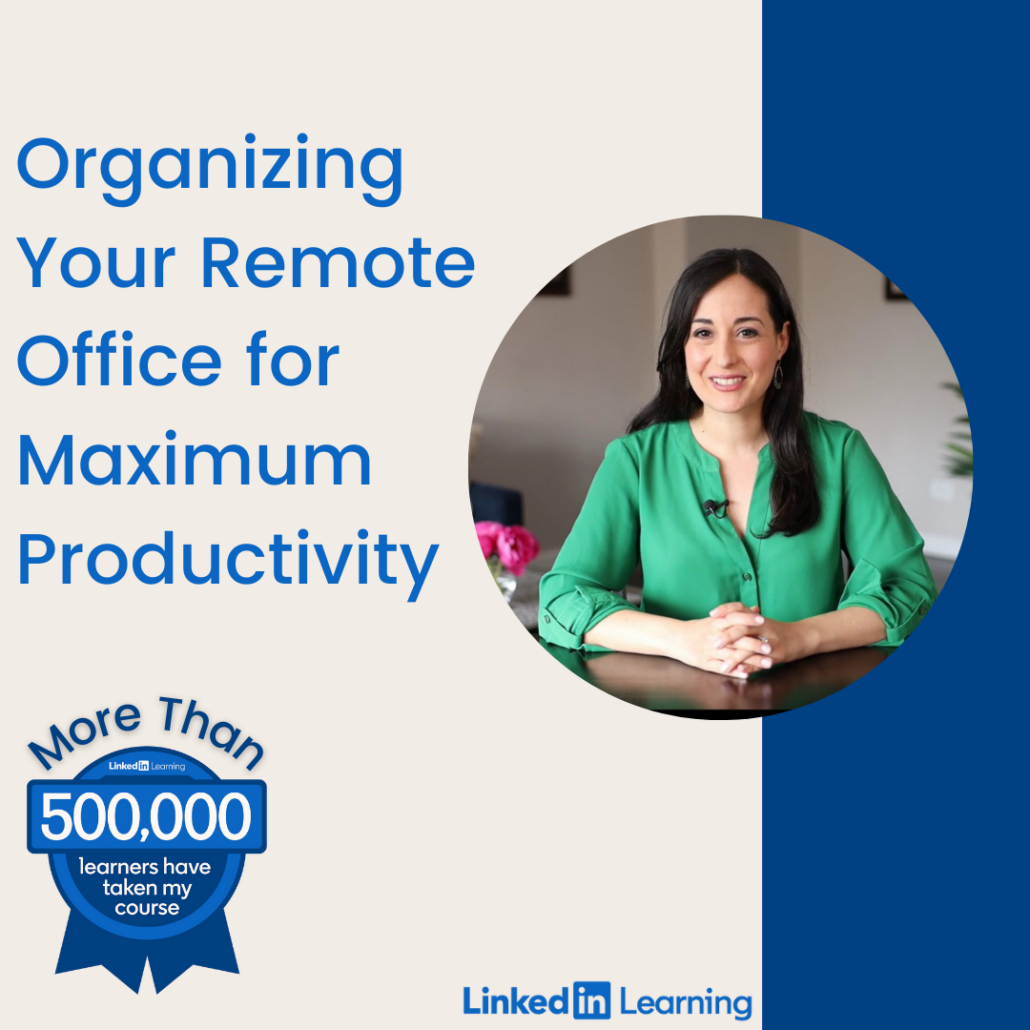
2.) Create a video studio.
If you work remotely, your home office doubles as a video studio. You’re probably taking all kinds of video calls to conduct meetings and check in with your clients or colleagues. So take a moment to think about what kind of equipment and backdrop you need to appear professionally on those calls.
It’s important to up your game when it comes to virtual meetings — we’re way past the days when having your cat run around behind you was acceptable! Good video quality and audio quality, combined with a neat and professional backdrop, makes all the difference.
I shared some of my favorite equipment and video tips here. Remember, you don’t need to spend a lot on this all at once. Just think about what improvements are important to you and go.
3.) Set boundaries.
One of the biggest challenges for remote work is setting boundaries. Just because you aren’t clocking in and out of an office doesn’t mean you should be available 24/7!
It’s so important to set clear expectations with your colleagues and clients about when you will and won’t be available. This might look like an email signature sharing what hours and days you are reachable by email and phone, or automatic responses if someone gets in touch when you’re on vacation.
4.) Organize your digital life.
Remote work requires using a variety of communication platforms, from Zoom to Slack. Whether or not you have control over which of these platforms you use, you can always revisit the way you’re using them and take advantage of their features. For instance, do you use email folders? Do you send audio messages to colleagues?
It’s essential to think creatively about digital platforms and communication if you’re working remotely. Being organized is important because your colleagues might be spread out across the country or the world — they can’t just pop over to your desk to ask you where a file is located.
5.) Make an on-the-go strategy.
Working remotely doesn’t just mean working from home! You might be working from an Airbnb, a hotel, or the home of a family member. Having a checklist of items you need to bring to do your work from anywhere will save you so much time and trouble. This is something I go into in two of my LinkedIn Learning courses: Enhance Productivity in a Hybrid Work Environment and Be an Effective Hybrid or Virtual Employee.
You can watch the full episode of Inside Scoop for more strategies!
___
BONUS FREEBIE: Want even more ways to stay organized, productive and less stressed? Click here to get access to my List-Making Starter Kit. It will boost your efficiency and get you back to doing more of the things you love.
___



